

Department Seminar
Wednesday, July 20, 3:30 - 4:30pm, WEL 2.122
Assistant Professor
Iowa State University
PhD UT Austin, 2010 (Crooks)
Abstract: Droplet-based techniques have had a profound impact in chemistry, owing to an ability to perform rapid and massively parallel reactions in minute fluid volumes. In many applications, concentration enrichment is required to increase the speed of reactions or the sensitivity of assays; but in-droplet concentration enrichment remains challenging. This talk will focus on recent developments in the Anand laboratory aimed at controlling droplet composition. We recently interfaced electrokinetic concentration polarization with droplet microfluidics to accomplish in-droplet de-mixing. This result is significant because the concentration of any charged species in the droplet can be enriched and the approach can be readily integrated into existing droplet workflows. The talk will further describe results that show electrokinetic separation of two anionic fluorophores within droplets. Such a capability potentiates the droplet-templated synthesis of particles with gradient composition and the development of mobility-shift assays, which rely on discrimination of multiple species tagged with a single-color fluorophore. Finally, by using a calcium-binding dye as an indicator, we demonstrate in-droplet cation exchange. This demonstration of cation exchange in droplets is significant because of its broad applicability to strategies for synthesis and bioassays. These results lay the foundation for new advanced droplet techniques with transformative applications.
Analytical & Physical Seminar
Thursday, May 19, 3:30 - 4:30pm, WEL 2.122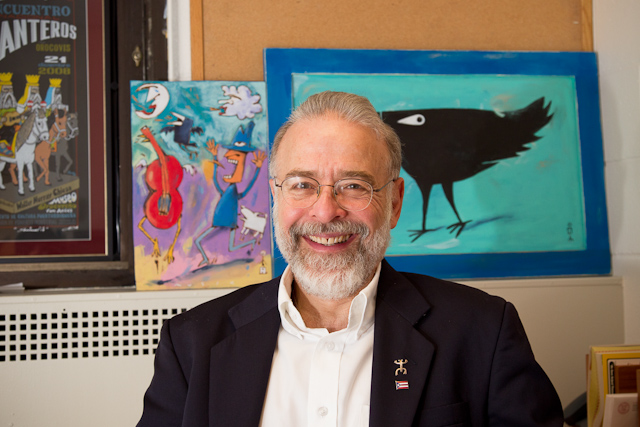
Professor
Cornell University
This presentation will deal with the development of new materials and operando methods for energy conversion and storage with emphasis on fuel cells and battery materials and technologies. The presentation will begin with a brief overview of the methods employed with emphasis on the use of X-ray based methods and transmission electron microscopy (TEM) under active potential control. The utility of these methods will be illustrated by selected examples focusing on non-precious metal electrocatalysts for the oxygen reduction reaction (ORR), and MEA testing as well as spectroscopic studies of Li/S batteries, Li metal deposition and the use of organic materials in electrical energy storage applications. The presentation will conclude with an assessment of future directions.
Inorganic Seminar
Wednesday May 18, 3:30 - 4:30pm, WEL 2.122
Professor
University of Washington
We are interested in developing colloidal nanocrystals for wide-ranging applications in energy interconversion. Our approach leverages the extraordinary properties of nanoscale systems and applies design principles from molecular inorganic chemistry. This talk will focus on two key research themes. First, we will explore how interfacial chemistry can be used to control the photophysics and emissive properties of colloidal semiconductor nanocrystals. Lewis acid coordination, shelling, and cation doping will be presented as complementary methods to address charge trap states and strain at the nanocrystal surface. Second, we will explore interfacial chemistry concepts to control the inner-sphere reactivity of colloidal electrocatalysts for multi-proton, multi-electron transformations. Ligand etching, ligand exchange, and covalent functionalization will be presented as complementary methods to alter electrocatalytic interfaces by tuning the activity, selectivity, and bulk solvent/electrolyte interactions. Ultimately, we are viewing nanocrystal interfaces as platforms for coordination chemistry that will direct function.
Analytical & Physical Seminar
Thursday, May 12, 3:30 - 4:30pm, NHB 1.720 (new location)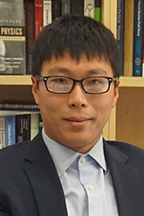
Assistant Professor
University of Rochester
The quantum light-matter interactions between the molecule and the quantized radiation mode inside an optical cavity create a set of hybridized electronic-photonic states, so-called polaritons, opening up new possibilities to control chemical reactions by exploiting intrinsic quantum behaviors of light-matter interactions. In this talk, I'll present our recent investigations on new chemical reactivities enabled by cavity quantum electrodynamics and demonstrate detailed mechanisms of how quantized light-matter interactions can change the outcomes of chemical reactions. First, we demonstrate that the selectivity of a model photo-isomerization reaction can be controlled by tuning the photon frequency of the cavity mode, providing new ways to manipulate chemical reactions via light-matter interaction. We further investigate collective quantum effects enabled by coupling quantized radiation mode to multiple molecules. Second, we will present our recent theoretical framework that resolves the Gauge ambiguities and provide the fundamental theoretical framework for the molecular cavity QED. Finally, we present a theoretical explanation of the cavity modification of the ground state reactivity in the vibrational strong coupling (VSC) regime in polariton chemistry. Our theoretical results suggest that the VSC kinetics modification is originated from the non-Markovian dynamics of the cavity radiation mode that couples to the molecule, leading to the dynamical caging effect of the reaction coordinate and the suppression of reaction rate constant for a specific range of photon frequency close to the barrier frequency.
Analytical & Physical Seminar : Centennial Visiting Lectureship in Chemistry
Thursday, May 5, 3:30 - 4:30pm, WEL 2.122
Professor
Ohio State University
Characterization of the overall topology and inter-subunit contacts of protein complexes, and their assembly/disassembly and unfolding pathways, is critical because protein complexes regulate key biological processes, including processes important in understanding and controlling disease. Tools to address structural biology problems continue to improve. Native mass spectrometry (nMS) and associated technologies such as ion mobility are becoming an increasingly important component of the structural biology toolbox. When the mass spectrometry approach is used early or mid-course in a structural characterization project, it can provide answers quickly using small sample amounts and samples that are not fully purified. Integration of sample preparation/purification with effective dissociation methods (e.g., surface-induced dissociation, SID), ion mobility, and computational approaches provide a MS workflow that can be enabling in biochemical, synthetic biology, and systems biology approaches. Native MS can determine whether the complex of interest exists in a single or in multiple oligomeric states and can provide characterization of topology/intersubunit connectivity, and other structural features. Beyond its strengths as a stand-alone tool, nMS can also guide and/or be integrated with other structural biology approaches such as SEC, SAXS, AUC, NMR, X-ray crystallography, and cryoEM. Examples will be presented to illustrate complementary data provided by native MS/SID and other structural biology tools.
Inorganic / Analytical & Physical Seminar
Wednesday May 4, 3:30 - 4:30pm, WEL 2.122
Assistant Professor
UCLA
Electrochemical nanomaterials have witnessed extensive applications in catalysis, energy storage, and conversion. In this talk, I will present some new synergies from electrochemical nanomaterials that enable new applications in both catalysis and microbiology. Because electrochemical nanomaterials spatiotemporally control the microscopic concentration profiles of chemical species, we envision electrochemistry at the microscopic scale as a viable tool for transducing electronic signals into controlled non-equilibrium systems. Aided by the machine-learning-based inverse design, we will discuss how to establish catalytic reactions of seemingly incompatible steps, as well as how to mimic and perturb the extracellular space in microbiology. The ubiquity of non-equilibrium systems in chemistry and biology suggests much more applications of electrochemically controlled spatiotemporal heterogeneity in the future.
Organic Seminar
Monday, May 2, 3:30 - 4:30pm, WEL 2.122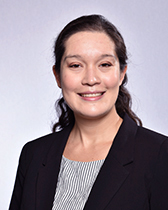
Assistant Professor
Northwestern University
The Kalow lab interrogates and exploits the relationship between molecular reactivity and macroscopic properties to discover polymeric materials relevant to human health and sustainability. We approach “reactivity-property” relationships bidirectionally: in reactivity-directed materials discovery, we use synthesis and physical organic chemistry to control reactions occurring within polymer networks composed of reversible covalent bonds. We translate changes in reactivity into macroscopic responses, ranging from recyclability in elastomers to photocontrolled stiffness in adaptable hydrogels. In properties-directed reaction discovery, we design photochemical reaction mechanisms that target desirable photophysical properties. Based on this principle, we have discovered a catalyst-free photopolymerization to produce n-type π-conjugated polymers, and a selective photoinduced cross-coupling of polyhalogenated dyes. Across these projects, light provides precise, tunable, and noninvasive spatiotemporal control over molecular reactivity.
Analytical & Physical Seminar
Thursday, April 28, 3:30 - 4:30pm, WEL 2.122
Assistant Professor
University of Virginia
Our lab develops new imaging approaches for visualizing bacterial physiology in relevant contexts: We use live-cell single-molecule localization microscopy and lattice-light sheet microscopy to access 3D spatial and temporal information with high resolution. At molecular and cellular length scales, our research focuses on understanding how Gram-negative bacterial pathogens assemble and regulate the Type 3 Secretion System (T3SS) – a 7 MDa multi-protein complex that spans two, and sometimes three cellular membranes. The T3SS is used by prominent bacterial pathogens to inject effector proteins into the cytosol of eukaryotic host cells – a virulence mechanism that, in aggregate, results in more than 1 million human deaths each year. At cellular and super-cellular length scales, our research focuses on visualizing the behaviors of individual bacteria inside tissue-like microbial communities. As a major component of bacterial biomass on earth, microbial communities have substantial impacts on the biogeochemistry of our planet and on the biochemistry of higher living organisms.
In the first part of my talk, I will describe how single-molecule localization and tracking microscopy in different genetic and opto-ogenetic backgrounds provides a path towards understanding the molecular assembly mechanism(s) that contribute to type 3 secretion in living cells. Through computational aberration correction and numerical modeling, we determine the 3D subcellular localization and diffusive states of individual, fluorescently labeled T3SS proteins. Our results indicate that T3SS proteins pre-assemble into freely diffusing cytosolic complexes prior to binding to the membrane-spanning multi-protein complex. Determining how cytosolic proteins assemble with each other in living cells provides key insights into the dynamic regulatory network that controls type 3 secretion. In the second part of my talk, I will describe how lattice light-sheet microscopy enables non-invasive 3D imaging of microbial communities at single-cell resolution. Analyzing the resulting 3D images using a combination of computer vision and machine learning approaches enables multi-cell tracking of cell motions, cell morphologies, and cellular gene expression over time. Our goal is to apply these new imaging and image analysis approaches to understand the emerging functional capabilities of microbial communities in terms of the behavioral phenotypes of individual cells. Such knowledge can help inform new strategies for controlling microbial community growth and harness the metabolic potential of the microbial world in biotechnological applications.
Organic Seminar
Monday, April 25, 3:30 - 4:30pm, WEL 2.122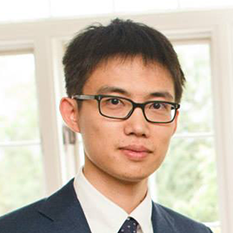
Assistant Professor (Chemical and Environmental Engineering)
Yale University
Organic Seminar - HHMI Seminar
Friday, April 22, 3:15 - 4:30pm, WEL 2.122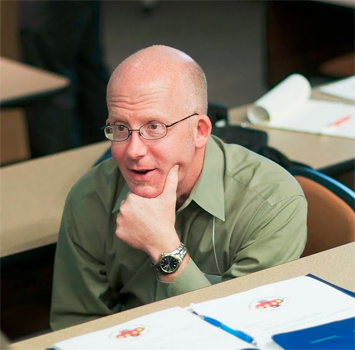
Professor
University of Oregon
Abstract: This talk will present our synthetic, structural, computational and materials studies of a class of carbon-rich semiconducting molecules based on the indenofluorene (IF) skeleton. Access to the fully conjugated, 20 π-electron, formally antiaromatic system is accomplished viaa variety of intermediate diones. These molecules in turn can be assembled via well-known organic possesses(Suzuki cross-coupling, benzylic oxidation, Friedel-Crafts acylation/alkylation). Optimization of their synthesis now permits access to IF derivatives in multigram quantities. We have shown that thin films or single crystals of several different IF scaffolds can serve as an active layer in organic field effect transistors (OFETs). Current studies are focused on varying the antiaromaticity of the indacene unit by systematic alteration of the outer benzene groups with other aromatic units3as well as on increasing the diradical character of the framework by expansion of the quinoidal core.
Organic Seminar - HHMI Seminar
Friday, April 22, 3:15 - 4:30pm, WEL 2.122
Professor
Tulane University
Abstract: A better understanding of how molecules interact in aqueous solutions has ramifications across the chemical and biochemical realms. Regarding the former, one aspect of our research focuses on utilizing the hydrophobic effect and Hofmeister effects to assemble yoctoliter (10^–24 L) capsules that can either engender novel separations,or act as reaction vessels. This presentation will focus on the latter, discussing how encapsulation can be used to control the physicochemical properties of bound molecules such as conformation and/or pKa, as well as how such control can be used in turn to control chemical reactivity.
Analytical & Physical Seminar
Thursday, April 21, 3:30 - 4:30pm, WEL 2.122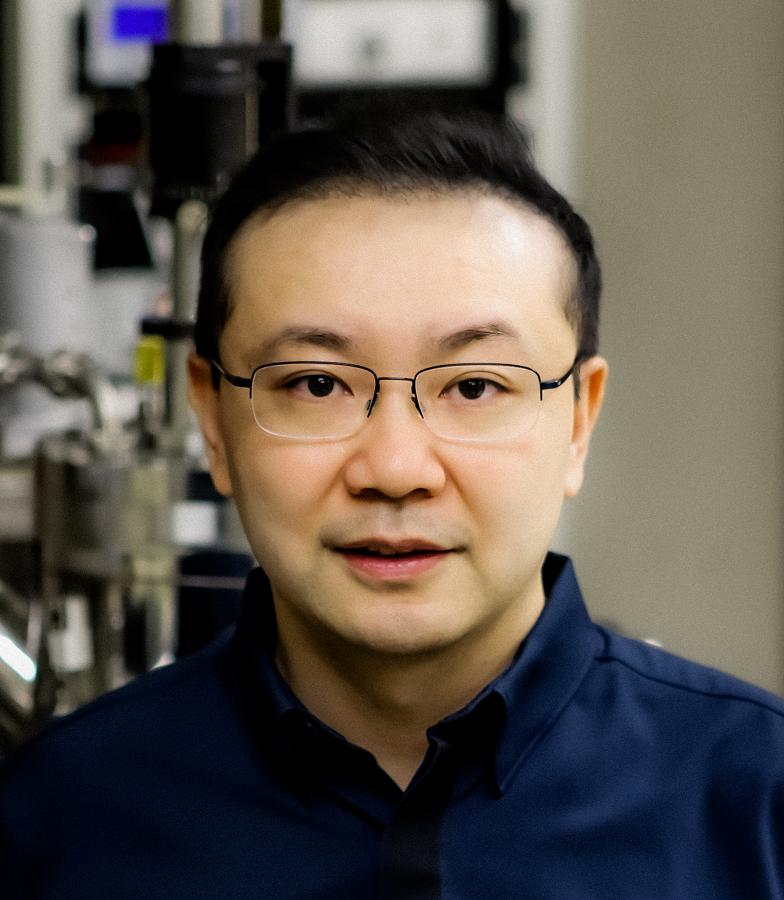
Associate Professor
University of Illinois Chicago
Our lab focuses on applying scanning probe-based nanotechnology in nanostuctures design and properties investigation. We are developing a hybrid technique by combining scanning probe microscopy with optical spectroscopy to understand and predict the single-molecule processes at the nano-scale, including charge transfer, electron localization and generation, photoabsorption and photoemission, which provides new insights into the discover and design of new optical and electronic devices.
Inorganic Seminar
Monday, April 18, 3:30 - 4:30pm, WEL 2.122
Assistant Professor
Ohio State University
Despite the growing interest in the synthesis of fluorinated organic compounds, few methods are able to incorporate fluoride ion directly into alkyl C−H bonds. We are developing C(sp3)−H fluorination methods with formally copper(III) fluoride complexes. Quantum chemical calculations reveal significant fluorine radical character for copper(III) fluoride, suggesting their ability to initiate and terminate a C(sp3)-H fluorination sequence. The capability of copper(III) fluoride to perform both hydrogen atom abstraction and radical capture was leveraged to enable fluorination of allylic and benzylic C−H bonds and α-C−H bonds of ethers at room temperature.
Organic Seminar
Friday, April 8, 3:30 - 4:30pm, WEL 2.122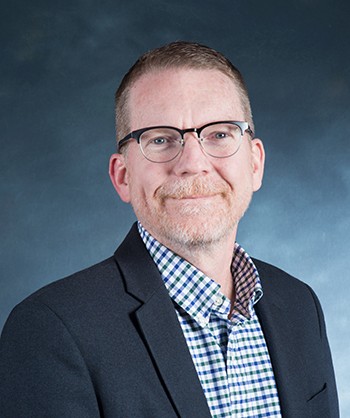
Professor
Boston College
Synthetic organic chemistry has undergone a paradigm shift over the past 15 years with new metal-catalyzed transformations enabling bond formation in ways that chemists previously only dreamed about. Realizing the impact that new catalytic asymmetric reactions will have on the continued evolution of organic synthesis, we have focused our research on the development of new processes and on studying their utility in complex molecule synthesis. Control of enantioselectivity is an overarching theme as adequate control of molecular shape is paramount in the design of effective therapeutics, materials, and commodity chemicals. Our progress towards these goals depends upon expertise in many areas of chemistry including organometallic chemistry, physical organic chemistry, and synthetic organic chemistry. Additionally, computational chemistry plays a central role in ligand design and in prediction of reaction outcomes.
Analytical & Physical Seminar
Thursday, April 7, 3:30 - 4:30pm, WEL 2.122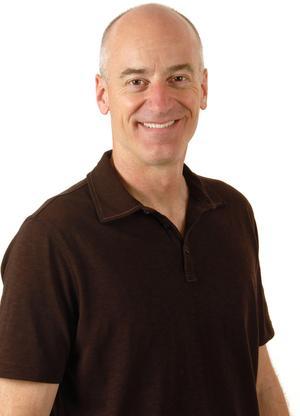
Professor
UC Irvine
Abstract: In the universe of 1D chemical sensors, devices based upon carbon nanotubes (CNTs) (pioneered by Zettl, Dai, and others) and semiconductor nanowires (first demonstrated by Lieber) receive top billing. This is justified both in terms of the chronology of the field and in terms of the performance of these sensors. Both CNT and semiconductor nanowires – exploiting different transduction mechanisms - have been successfully applied to the detection of gases and vapors, as well as for measuring biomolecules in aqueous solutions and dilute physiological fluids. Metal nanowires have had a small roll in the 1D sensing ecosystem by comparison – mainly involving the detection of hydrogen gas using palladium nanowires. Is a more prominent roll for metal nanowires in chemical sensing possible? In pursuit of an answer, we have started to investigate several metal nanowire sensor architectures. In this talk, attention is focused on metal nanowire/nanogap sensors for the measurement of pH. A pH sensor with a largest linear dimension of ≈100 nm is fabricated within a single gold nanowire. Fabrication involves the formation of a nano-gap within the nanowire by feed-back controlled electromigration followed by the electrodeposition of an ultra-thin (≈50 nm thickness), pH-responsive poly(aniline) layer that fills the nano-gap. The measured electrical impedance, Z, of the PANI-filled nanogap is correlated with pH over the range from 2.0 – 9.0 for buffered solutions. A response time for this nanosensor of ≈5 seconds is demonstrated across this pH range, and accurate, randomized, repeat measurements of pH across this range are demonstrated. The measured pH is weakly influenced by the salt concentration of the contacting aqueous solution, but impedance measurements at two frequencies – ≈100 kHz and ≈1 Hz – enables correction of the apparent pH for salt effects, preserving the accuracy of the pH measurement across the entire calibration curve, and over a wide range of salt concentrations from 1.0 mM to 1.0 M. The result is a nanoscopic pH sensor that approaches the utility of a conventional, macroscopic pH glass membrane electrode in terms of reusability, measurement-to-measurement reproducibility, and response time. The lessons learned from this proof-of-concept demonstration may point the way to other types of metal nanowire-based sensing applications.
Inorganic Seminar
Wednesday, April 6, 3:30 - 4:30pm, WEL 2.122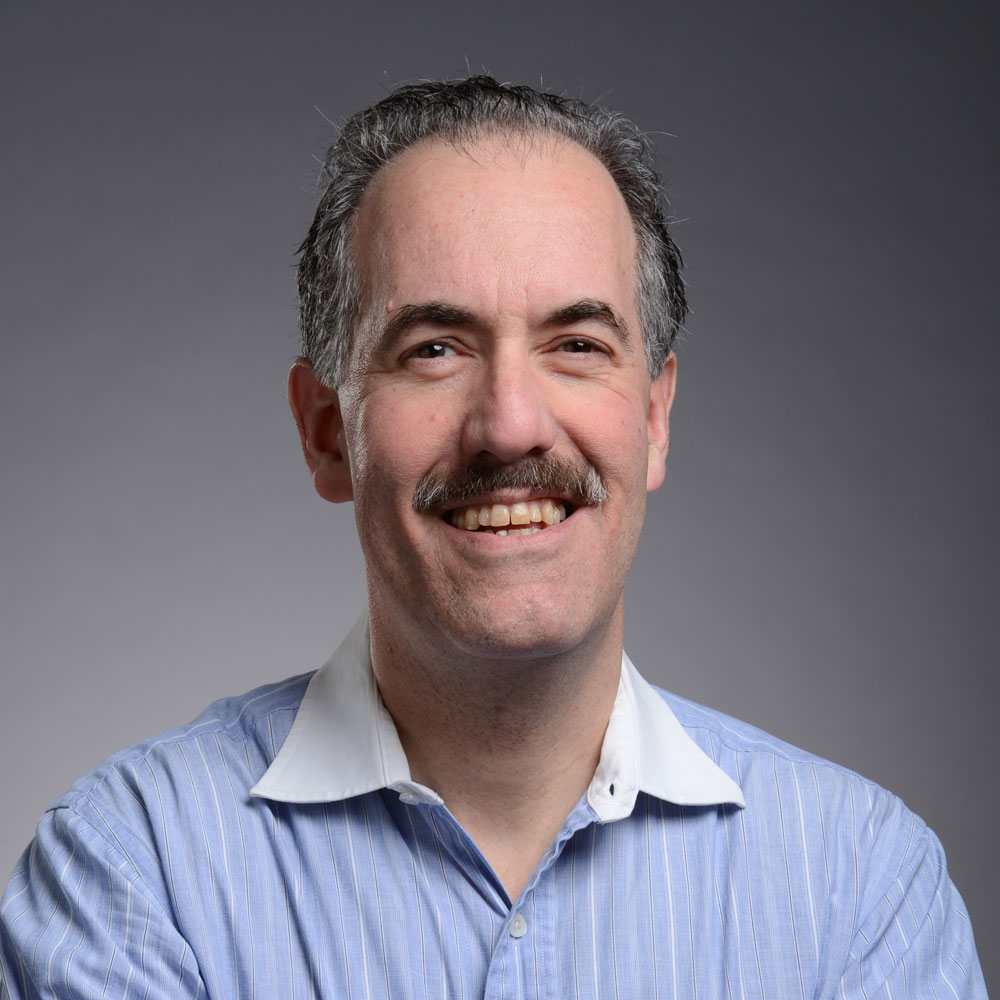
Associate Professor
Roosevelt University
Abstract: Electron paramagnetic resonance at high magnetic fields (up to 25 T) and high frequencies (sub-THz: 95 - 750 GHz), known as HFEPR, has been developed over the past two decades. There are many applications of HFEPR, such as in the precise determination of g values in systems with multiple radical species (e.g., photosynthesis). Another application is in transition metal coordination chemistry: there are many paramagnetic complexes for which conventional EPR (fields below 1.5 T, frequencies up to 35 GHz) is less than ideal. Primarily, such systems are high-spin, wherein the effects of zero-field splitting can make the complex either “EPR-silent” using conventional EPR, or the EPR spectrum is not particularly informative, such as for the “g = 4.3” signal in Fe(III). We will describe the use of HFEPR to study high spin first row transition metal complexes (from Group 4 through Group 10) with both “classical scorpionate” ligands (i.e., trispyrazolylborates) and “non-classical scorpionates” (i.e., trisimidazolylborates), in conjunction with other techniques such as MCD and Mӧssbauer. We will also discuss how theory can be used to provide chemical information, based on analysis of the spin Hamiltonian parameters determined by HFEPR.
Analytical & Physical Seminar
Monday, April 4, 3:30 - 4:30pm, WEL 2.122
Associate Professor
University of Colorado Boulder
Abstract: In this talk I will describe our work to guide the synthetic design of small organic molecules for quantum information and computing applications. Most contemporary quantum hardware only exhibits quantum function at ultralow temperatures—a tyranny of temperature that makes quantum circuits noisy above a few Kelvin—and a major bottleneck that emerging materials must overcome. The fundamental reason for this is the thermally generated uncertainty in the initial state of the system, sometimes called the “state initialization problem” in quantum computing. I will describe how singlet fission, a phenomenon where a singlet exciton splits into a biexciton, can generate spin-polarized excitons at temperatures far higher than those employed in contemporary quantum hardware. The spin states of the biexciton form the basis of quantum gates, and I will describe the molecular symmetries and design principles that underlie the state-selectivity responsible for the strong polarization of the initial state and long coherence times. Predictions of our theory manifest in time-resolved electron-paramagnetic resonance spectra of a rigid dimer, TIPS-BP1’, that we assign with an accuracy unprecedented in the literature.
Organic Seminar
Monday, April 4, 3:30 - 4:30pm, ZOOM
Assistant Professor
Georgia Tech
Abstract: Natural products are organic secondary metabolites produced by all forms of life. In their native environment, natural products mediate intra- and interspecies communication. Bioinhibitory activities of natural products make them medicinally attractive– majority of clinically used drugs and pharmaceuticals are or are derived from natural products. The Agarwal laboratory seeks to understand how gene encoded enzymes construct natural product organic structures starting from simple biologically available starting materials. With the underlying motivation to reconstitute natural product biosynthetic pathways in the laboratory, we use a multidisciplinary approach involving metabolomics, (meta)genomics, enzymological assays, and structural biology to query the intricate enzymological chemistry which underlies natural product biosynthesis, and the metabolomic and genomic complexity of multi-organismal ecological niches in which natural products are produced. This seminar will highlight recent progress in three research directions: mass spectrometry-based identification of intermediates to reconstruct cryptic biosynthetic schemes, total in vitro reconstitution of polyketide synthases to reveal gatekeeping selectivity of ketosynthase domains, and the discovery and synthetic biological elaboration of an exceptionally widely distributed biosynthetic gene loci encoding brominated ribosomally synthesized and post-translationally modified peptide natural products.
Analytical & Physical Seminar
Thursday, March 31, 3:30 - 4:30pm, WEL 2.122
Assistant Professor
Wayne State University
Abstract: Electrochemical synthesis is a powerful tool for formulating functional materials and molecules because it offers an additional level of control over the synthesis relative to its chemical counterpart by fine-tuning mass transfer, potential, or current. Furthermore, electrochemical synthesis also allows the convenient analysis of chemical reaction thermodynamics and kinetics using the current signal generated during the electrochemical synthesis. In this talk, three recent advancements in electrochemical synthesis will be presented: (1) Electrochemical gelation of quantum dots, (2) Electrosynthesis of grain-boundary-rich nanoparticle assemblies, and (3) Alternating current electrolysis for organic synthesis.
Inorganic Seminar
Wednesday, March 30, 3:30 - 4:30pm, WEL 2.122
Professor
Johns Hopkins University
Abstract: Small molecule activation by transition metal centers is at the heart of chemistry and biology. Some of the most important and difficult challenges facing humanity include disease, energy transduction and storage, and environmental sustainability, and in all of these areas small molecules (e.g. O2, N2, CO2, NO, H2S, CH4) and their redox transformations, mediated by transition metal centers, play an essential role. Nature has devised a remarkable tool box containing metalloenzymes to carry out these transformations, and our laboratory is interested in extracting the principles by which these enzymes operate, and then employing these principles to build functioning, synthetic systems for small molecule activation. This talk will focus on our recent efforts to construct heme and nonheme metal complexes for the activation of O2, and the examination of downstream intermediates following that activation. In one example, a heme-related, sterically bulky iron(II) corrole complex is shown to bind and activate O2 to give an iron(III)-superoxo complex, which reacts with H-atom transfer and indole substrates. The same corrole provided access to the first example of a formal FeIV(OH) complex, which in turn allowed us to study its reactivity with carbon radicals in a process analogous to the long-postulated “rebound” step in heme monooxygenases. In another example, we have shown that a mononuclear nonheme iron(II) complex can activate a single molecule of O2 to give iron-peroxo, -oxo, and -hydroxo intermediates in the presence of oxidatively sensitive sulfur ligands. This reactivity has implications for how nonheme iron oxygenases such as the thiol dioxygenases, carry out the oxidation of cysteine derivative substrates. Mononuclear nonheme iron complexes that support a series of stable cis-ligated (FeIII(OH)(X) (X = halide, thiolate) species will also be described, along with their preferential reactivity (OH• versus X•) toward carbon radicals (R•). These studies provide fundamental information of relevance to the nonheme iron halogenases and isopenicillin N synthase, as well as to the design and construction of synthetic nonheme iron catalysts
Vista Chemical Company Regents Endowed Memorial Lectureship in Organic Chemistry
Friday, March 25, 3:30 - 4:30pm, WEL 2.122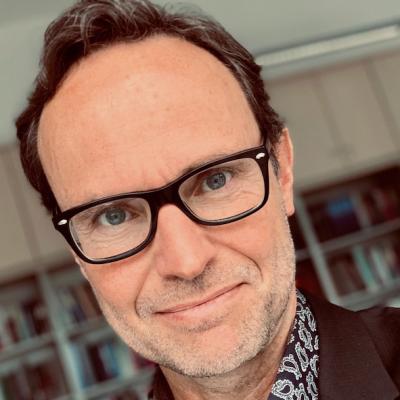
Professor
Justus Liebig University, Giessen
Abstract: The Gecko can walk up a glass window because of the adhesion in hydrophobic setae on its toes that convey van der Waals (vdW) interactions with the surface. The attractive part of vdW-interactions is an electron correlation effect referred to as London dispersion. Its role in the formation of condensed matter has been known since van der Waals and London who related dispersion to polarizability. London dispersion has been underappreciated in molecular chemistry as a key element of structural stability, chemical reactivity, and catalysis. This negligence is due to the notion that dispersion is weak, which is only true for one pair of interacting atoms. For increasingly larger structures, the overall dispersion contribution grows rapidly and can amount to tens of kcal mol–1. This presentation shows selected examples that emphasize the importance of inter-and intramolecular dispersion for molecules consisting mostly of first row atoms. We note the synergy of experiment and theory that now has reached a stage where dispersion effects can be examined in fine detail. This forces us to re-consider our perception of steric hindrance and stereoelectronic effects, and even the transferability of chemical bond parameters from one molecule to another, both in structural chemistry and in catalysis.
Organic Seminar
Friday, March 4, 3:30 - 4:30pm, WEL 2.122
Assistant Professor
Northeastern University
Abstract: Photochemical reactions are increasingly important for the construction of value-added, strained organic architectures. Direct excitation and photoredox reactions typically require mild conditions and permit access highly strained molecules and new synthetic methodologies. The a priori design of photochemical reactions is challenging because degenerate excited states often result in competing reaction mechanisms to undesired products. Further, a lack of experimental techniques that provide atomistic structural information on ultrafast timescales (10–15 – 10–12 s) limits general ‘chemical intuition’ about these processes. Computations, however, provide a path forward. I will discuss how my group has leveraged state-of-the-art quantum mechanical calculations, non-adiabatic molecular dynamics, and machine learning (ML) techniques to understand the reactivities and selectivities of a photochemical cascade reaction towards the first stable polyacetylene, fluoropolyacetylene. I will introduce our new open-access machine learning tool, Python Rapid Artificial Intelligence Ab Initio Molecular Dynamics (PyRAI2MD), which enables 1,000-fold longer simulations than are currently possible with multiconfigurational NAMD simulations. PyRAI2MD has enabled nanosecond ML-NAMD simulations on stereoselective electrocyclic reactions with record degrees of freedom and molecular complexities
Analytical & Physical Seminar
Thursday, March 3, 3:30 - 4:30pm, NHB 1.720
Assistant Professor
University of Maryland, College Park
Abstract: The ability to rapidly learn from high-dimensional data to make reliable predictions about the future is crucial in many contexts. This could be a fly avoiding predators, or the retina processing terabytes of data guiding complex human actions. Modern day artificial intelligence (AI) aims to mimic this fidelity and has been successful in many domains of life. It is tempting to ask if AI could also be used to understand and predict the emergent mechanisms of complex molecules with millions of atoms. In this colloquium I will show that certain flavors of AI can indeed help us understand generic molecular and chemical dynamics and also predict it even in situations with arbitrary long memories. However this requires close integration of AI with old and new ideas in statistical mechanics. I will talk about such methods developed by my group using different flavors of generative AI such as information bottleneck, recurrent neural networks and denoising probabilistic models. I will demonstrate the methods on different problems, where we predict mechanisms at timescales much longer than milliseconds while keeping all-atom/femtosecond resolution. These include ligand dissociation from flexible protein/RNA and crystal nucleation with competing polymorphs. I will conclude with an outlook for future challenges and opportunities.
Inorganic Seminar : Richard Lagow Excellence Fund in Inorganic Chemistry
Wednesday, March 2, 3:30 - 4:30pm, WEL 2.122
W. M. Keck Professor of Energy
MIT
Abstract: The emergence of electrically conductive metal-organic frameworks (MOFs) has been one of the most paradoxical developments in the field in the last few years. Indeed, how can one transport charges through a material that is mostly “empty” space? In this sense, MOFs made from layers of organic ligands connected by (typically) square-planar metal ions have shown particularly good electrical conductivity. However, a precise mechanism for charge transport is still the subject of debate, with various experimental and computational reports describing these materials as metals, semiconductors, semimetals, or even borderline insulators. Most of the discussion on this point has been focused on the effects of in-plane metal-ligand conjugation and the efficiency of in-plane transport. This lecture will describe the latest efforts from our group to understand the intrinsic properties of these materials, especially as related to single-crystal electrical measurement studies, and will discuss in particular the unexpectedly large influence of out-of-plane transport. Time allowing, I will discuss unexpected results stemming from the behavior of these materials as 1D metals, and applications in energy storage and conversion.
Analytical & Physical Seminar
Thursday, February 24, 3:30 - 4:30pm, WEL 2.122
Assistant Professor
City College of New York
Abstract: The future of sustainable energy technologies requires not only highly efficient but also robust light-harvesting (LH) materials, especially as rising global temperatures (increase of extreme weather events such as excessively high temperatures) threaten the efficiency of existing photovoltaic installations. Unlike current solar energy conversion technologies, natural photosynthetic organisms have clearly evolved beyond these challenges, capturing and transporting solar energy both robustly and efficiently even under extreme environmental stress.In photosynthetic organisms,the first step (that is, light harvesting) involves the interaction between light energy and the light-harvesting antenna, which are composed of delicate, weakly bound structures known as supramolecular assemblies. Delocalized Frenkel excitons—coherently shared excitations among molecular chromophores—are responsible for the remarkable efficiency of supramolecular light-harvesting assemblies within those photosynthetic organisms. However, the translation of nature’s successful design principles to applications in optoelectronic devices has been limited by the fragility of the supramolecular structures used and the delicate nature of Frenkel excitons.
Analytical & Physical Seminar:
W. Albert Noyes, Jr. Distinguished Visiting Lectureship
Thursday, February 10, 3:30 - 4:30pm, WEL 2.122
James R. Eiszner Endowed Chair in Chemistry
University of Illinois at Urbana-Champaign
Abstract: In my talk, I’ll cover two topics in the general area of tunneling microscopy: looking at surface dynamics of glasses on a millisecond to hour scale, and excited state dynamics of nanomaterials on the sub-picosecond to nanosecond scale, both with sub-nm spatial resolution. The technique of “SMA-STM” works by shining modulated light on a sample and detecting the resulting change in electron density with an STM tip, which also enhances the evanescent light wave that excites the sample. I’ll show that we can build energy landscapes of glass surfaces and characterize the collective units that underly glassy dynamics, as well as image energy transfer dynamics and tomography of excited states in a variety of nanomaterials.
Department Distinguished Lecturer Seminar
Friday, January 28, 3:30 - 4:30pm, WEL 2.122
Professor
MIT
Abstract: The ability of triptycene and related structures to produce materials with unusual properties is simply remarkable. Beyond their initial utility in preventing self-quenching in emissive semiconducting polymers for chemical sensors, we have found that they can guide and enhance alignment to liquid crystals, produce high modulus low dielectric constant materials, functional as gas permeable materials, simultaneously give dramatic increases in strength and ductility of polymers, and provide for novel electronic interactions. In this lecture I will detail select examples from our recent triptycene polymer efforts including: (1) post-polymerization functionalization to give materials with high proton and anion conductivities, (2) scalable synthesis of materials that behave as chemical sponges for aromatic molecules, (3) polymerization of shape persistent iptycene macromonomers to produce high free volume materials, (4) the use of high free volume to create high performance gas separation membranes, (5) iptycene materials as stabilizing hosts for catalytic nanoparticles, (6) polymers and molecules with electronically active elements that communicate by homo-conjugation to give thermally activated delayed fluorescence and (7) photoredox catalysis.
The Guest Seminar profiles are brought to you by the Mallet Chemistry Library.
Seminar tabs are listed in the order of upcoming dates, followed by past seminars (most recent first).

This work is licensed under a Creative Commons Attribution-NonCommercial 4.0 Generic License.